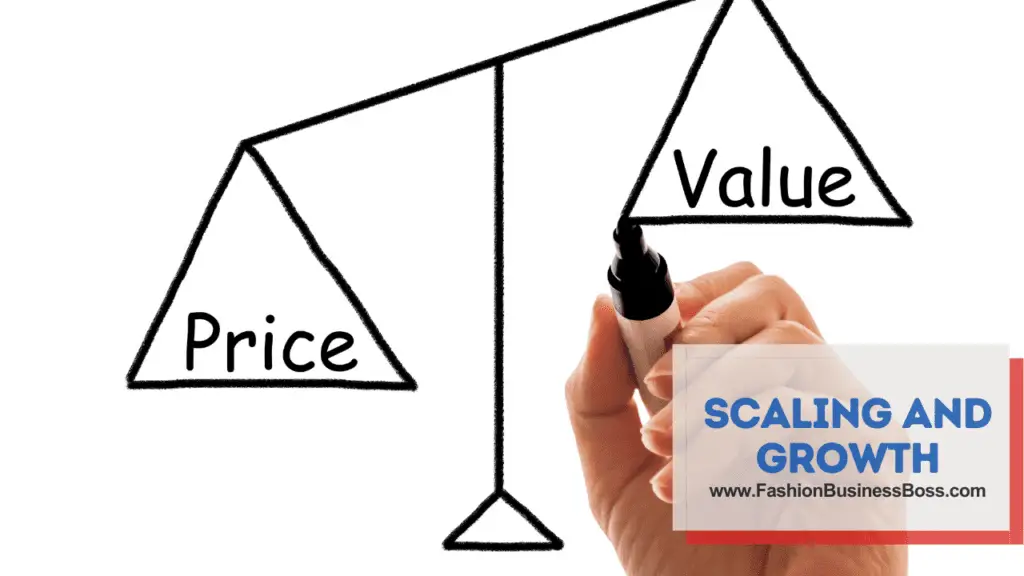Selling clothes is not just a business; it’s an art and a science. From selecting the right products to marketing effectively and providing exceptional customer experiences, there’s a lot that goes into running a great clothing business.
To excel in the competitive world of selling clothes, you must blend style, quality, and marketing finesse. It’s not just about fashion; it’s about crafting an irresistible brand that resonates with your audience.
In this article, we will explore the key aspects and strategies that can help you thrive in this competitive industry.
Finding Your Niche

Identifying your niche is a fundamental step when venturing into the clothing business. It’s about determining the specific area of the fashion market where you want to focus your efforts. For instance, you might choose to specialize in luxury fashion, sustainable clothing, or streetwear.
Why is this important? Well, by pinpointing your niche, you narrow down your target audience. You’re not trying to appeal to everyone; instead, you’re tailoring your products and marketing to a specific group of people who are genuinely interested in what you offer. This focus makes your business more efficient and effective.
Moreover, having a niche allows you to stand out in the competitive market. It’s like carving your own unique path. Customers who are passionate about luxury fashion, for example, are more likely to notice and engage with your brand if that’s your niche.
Read more about: Is Your Wallet Ready? Starting a Clothing Business Costs
Sourcing Quality Products
The importance of the clothing quality you offer cannot be overstated. It means that the clothing you sell must be excellently crafted, sturdy, and meet your customers’ expectations.
Whether you’re establishing your clothing line or curating selections from various brands, meticulous attention to the materials and craftsmanship is imperative. The materials should be high-quality, comfortable to wear, and well-suited for their intended use. Craftsmanship signifies the level of skill and care dedicated to creating the clothing, ensuring they are free from flaws and have impeccable finishing.
High-quality products have a substantial impact on your business in multiple ways. Above all, they result in contented customers. When individuals purchase well-crafted and comfortable clothing, their satisfaction with the purchase is heightened. This contentment frequently leads to favorable recommendations by word-of-mouth, attracting new customers through referrals.
E-Commerce vs. Brick-and-Mortar
When it comes to deciding between an online store and a physical boutique for your clothing business, it’s a pivotal choice that requires careful deliberation. Each option comes with its own set of advantages and disadvantages, and your decision should be influenced by various factors.
Opting for an online store opens up the potential for a broader reach, potentially connecting with customers on a global scale. Moreover, it often demands lower initial investments compared to establishing a physical store. However, it’s important to note that the online marketplace is highly competitive, and gaining trust from customers can be more challenging. To succeed in the digital realm, you’ll need a well-designed website and effective digital marketing strategies.
On the other hand, a physical boutique provides the opportunity for a tangible shopping experience, fostering a sense of connection with customers. It offers immediate sales possibilities and the chance for in-person interactions. However, it comes with its own set of challenges, including higher upfront costs such as rent, utilities, and in-store inventory. The growth of a physical store often depends on its location and the foot traffic it receives.
When making this decision, it’s crucial to consider your target audience’s preferences. Younger, tech-savvy consumers may lean towards online shopping, while some individuals still prefer the traditional in-store experience. Your budget plays a pivotal role, as opening a physical boutique entails more substantial initial investments. Lastly, your chosen marketing strategy should align with the platform you select, whether it’s the digital realm or the physical world.
Building an Online Presence

In today’s digital age, it is crucial to establish a strong online presence for your clothing business. This entails creating a compelling website that not only showcases your products but also offers a seamless and user-friendly experience. Your website should load quickly and be responsive to various devices, ensuring accessibility to a broad audience.
Investing in high-quality product imagery is paramount. Clear, well-lit, and detailed photographs of your clothing items aid customers in making informed purchasing decisions. These images should accurately represent the colors, textures, and styles of your products.
Furthermore, a robust social media presence is essential. Choose platforms that resonate with your target audience and maintain a consistent presence. Regularly posting engaging content, which includes product updates, fashion advice, and customer testimonials, helps in retaining and attracting followers.
Lastly, content creation is a powerful tool. Develop and share informative and interesting content on your website and social media channels. This could encompass blog posts about current fashion trends, how-to guides, and behind-the-scenes insights into your business. Valuable content not only keeps your audience engaged but also positions your brand as an authority in the industry.
Read more about: How to Sell Clothes Wholesale: Your Roadmap to Growth
Effective Marketing Strategies
Effective marketing is a fundamental element of any thriving clothing business, as it plays a pivotal role in reaching and engaging the right audience.
To start, social media advertising is a potent tool. Craft compelling advertisements for platforms like Instagram and Facebook to showcase your clothing products. These ads have the potential to reach a vast online audience, connecting you with potential customers who might not have otherwise discovered your brand.
Influencer collaborations are another valuable avenue. Partnering with influencers whose style aligns with your brand can be highly effective. Influencers, with their significant following, can introduce your clothing to a broader audience and lend credibility to your products.
Email marketing is an essential part of the strategy. Use it to keep your audience informed about your latest collections, promotions, and events. Engaging newsletters that offer value to your subscribers can encourage them to visit your online store and make purchases.
Lastly, periodic promotions and sales can work wonders. These limited-time offers create a sense of urgency, prompting potential buyers to take action. Moreover, they reward loyal customers and incentivize them to return for future purchases.
Customer Experience
Exceptional customer service stands as a fundamental pillar in the realm of any thriving business, including a clothing enterprise. It revolves around ensuring that every interaction a customer has with your brand is positive and satisfying.
Firstly, prompt responses to customer inquiries or concerns are key. A swift response communicates your respect for their time and your commitment to addressing their needs, leaving them with a positive impression.
Moreover, the establishment of clear and transparent return and exchange policies is vital. Make these policies easily accessible, either on your website or in your physical store. Such clarity instills confidence in customers, assuring them that they have recourse should the need arise.
Taking customer service a step further by adding personal touches can set your brand apart. Handwritten thank-you notes, special discounts for loyal customers, or surprise gifts with purchases can make customers feel genuinely valued and appreciated.
Inventory Management

Efficient inventory management is a critical aspect of running any thriving business, including a clothing venture. It involves organizing and handling your stock of clothing items in a way that not only saves you money but also ensures you don’t end up with too much or too little inventory.
To achieve this, consider investing in inventory management software. This technology allows you to keep a close eye on your stock levels. It provides real-time information on how much of each item you have in your inventory, enabling you to make informed decisions about restocking or reducing certain items.
Effective inventory management helps you avoid overstocking, which ties up your resources and can lead to financial losses. It also prevents understocking, which can result in missed sales opportunities and dissatisfied customers. By striking the right balance and using inventory management tools wisely, you can optimize your stock levels, streamline your operations, and keep your clothing business running smoothly.
Read more about: How to Produce Your Own Clothes: Sewing Essentials and Beyond
Embracing Sustainability
Embracing sustainability has become increasingly important in our environmentally aware society. It involves making choices that reduce the negative impact of your clothing business on the environment while also appealing to conscientious consumers.
One way to embrace sustainability is by opting for eco-friendly packaging. This means using materials that are biodegradable or recyclable, reducing the environmental footprint of your product packaging. Sustainable packaging not only shows your commitment to the environment but also resonates with customers who prioritize eco-conscious choices.
Another avenue is sourcing clothing items from sustainable brands or launching your own sustainable clothing line. This means choosing materials and production processes that have a minimal impact on the environment, such as organic fabrics or responsibly sourced materials. Offering sustainable clothing options can attract consumers who value ethical and eco-friendly products.
Consumers increasingly appreciate businesses that take environmental responsibility seriously. Demonstrating your commitment to sustainability not only aligns with ethical principles but can also be a selling point that differentiates your clothing business from competitors. It reflects a genuine concern for the planet and can foster a positive image, ultimately attracting environmentally conscious customers who appreciate your efforts to reduce the clothing industry’s ecological impact.
Staying Ahead of Fashion Trends
In the dynamic world of fashion, staying ahead of trends is essential for your clothing business. It involves continuous efforts to remain informed about the latest styles, colors, and designs, ensuring that your offerings remain in tune with customer preferences.
One way to accomplish this is by attending fashion shows. These events serve as a direct window into emerging trends, providing valuable insights into what’s currently fashionable and sought after. By participating in or closely following these showcases, you can gain a deep understanding of the ever-evolving fashion landscape.
Another key aspect is staying updated through industry news. Fashion publications, websites, and social media platforms often report on new trends, celebrity fashion choices, and the latest collections from renowned designers. Regularly checking these sources helps you remain well-informed about what’s making waves in the fashion world.
Lastly, it’s crucial to analyze your own customer data. Listen to their feedback, monitor the sales performance of different items, and discern patterns and preferences from their behavior. This insight allows you to tailor your inventory to their specific tastes and demands, ensuring that your clothing business not only follows but also anticipates and meets the fashion trends desired by your target audience. This proactive approach fosters customer satisfaction and sustains your presence in the competitive fashion industry.
Scaling and Growth

As your clothing business experiences growth, you might contemplate expansion, which involves increasing the scope of your operations, such as opening additional stores or diversifying your product offerings. However, it’s imperative to approach this phase with prudent planning and meticulous financial management.
Expanding your clothing business typically requires a well-thought-out strategy. Before opening new stores or launching new product lines, conduct thorough market research to identify viable opportunities and assess the demand for your offerings in different locations or niches. This information enables you to make informed decisions about the direction of your expansion.
Financial management plays a central role in scaling your business. Ensure you have the necessary capital and resources to support the expansion without compromising the stability of your existing operations. Create a realistic budget, considering factors like rent, staffing, and inventory costs for new stores, or production and marketing expenses for new product lines.
Monitoring and evaluating the performance of your expanded ventures is also essential. Regularly assess their stability and adjust your strategies accordingly to maximize growth while maintaining financial stability.
Read more about: How to Open a Clothes Shop: Retail Revolution
Conclusion
Running a clothing business is a dynamic journey that combines creativity and strategy. By finding your niche, offering quality products, embracing e-commerce, marketing effectively, providing exceptional customer service, and staying adaptable, you can carve your path to growth in the fashion industry. Remember, mastering the art and science of selling clothes is an ongoing process, and your dedication will be reflected in your business’s growth.
Frequently Asked Questions

Q: How do I choose the right clothing niche for my business?
A: Selecting the right clothing niche involves assessing market demand, your personal interests, and competition. Research and identify a niche that aligns with your goals and has growth potential.
Q: What are some effective marketing strategies for a clothing business?
A: Effective marketing for a clothing business includes utilizing social media, influencer collaborations, email marketing, and SEO optimization. Tailor your strategy to your target audience and budget.
Q: How can I manage my clothing inventory efficiently?
A: Efficient inventory management relies on using inventory software, monitoring stock levels, and forecasting demand. Regularly assess your inventory, make data-driven decisions, and establish reorder points to prevent overstock or understock.
Q: What role does sustainability play in the clothing business?
A: Sustainability is increasingly important. Consider eco-friendly materials, ethical sourcing, and sustainable packaging. It’s not only an ethical choice but also a selling point for environmentally-conscious consumers.
Q: How can I stay updated on fashion trends for my clothing business?
A: Staying updated on fashion trends requires attending fashion shows, following industry publications, and tracking consumer preferences through surveys and social media analysis. Use this insight to adapt your inventory and marketing strategies accordingly.
To learn more about starting your own clothing business, check out my startup documents here.
Please note that the contents of this blog are for informational and entertainment purposes only and should not be construed as legal advice. Any action taken based on the information provided in this blog is solely at your own risk. Additionally, all images used in this blog are generated under the CC0 license of Creative Commons, which means they are free to use for any purpose without attribution.

Meet Shawn Chun: Entrepreneur and Fashion Business Fan.
I’m a happy individual who happens to be an entrepreneur. I have owned several types of businesses in my life from a coffee shop to an import and export business to an online review business plus a few more and now I create online resources for those interested in starting new ventures. It’s demanding work but I love it. I do it for those passionate about their business and their goals. That’s why when I meet a designer or boutique owner at a craft fair, farmers market, retail location or anywhere else I see myself. I know how hard the struggle is to retain clients, find good employees and keep the business growing all while trying to stay competitive.
That’s why I created Fashion Business Boss: I want to help fashion business owners like you build a thriving business that brings you endless joy and supports your ideal lifestyle.

